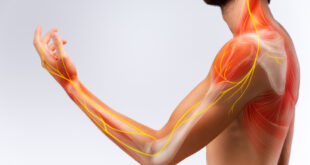The field of sleep medicine is an ever-expanding area of healthcare that addresses a wide range of sleep disorders affecting millions of people worldwide. With the increasing recognition of the critical role that sleep plays in overall health, the demand for skilled sleep technologists has grown significantly. For those aspiring to enter this rewarding field, the Accredited Sleep Technologist Education Program (A-STEP) offers essential training that bridges the gap between academic learning and practical, hands-on experience. A-STEP is designed to equip future sleep technologists with the knowledge, skills, and competencies needed to excel in their roles and contribute to improving patient outcomes.
What is A-STEP?
A-STEP, which stands for the Accredited Sleep Technologist Education Program, is a comprehensive training program developed by the American Academy of Sleep Medicine (AASM). The program is specifically designed to provide foundational education and training for individuals who wish to pursue a career as sleep technologists. A-STEP serves as a critical component of the pathway to becoming a Registered Polysomnographic Technologist (RPSGT), which is considered the gold standard in the field.
A-STEP consists of two primary phases: the Introductory Course and the Self-Study Modules. Together, these components offer a well-rounded education that covers both the theoretical aspects of sleep medicine and the practical skills needed to perform sleep studies, interact with patients, and analyze sleep data. Visit us
The Importance of A-STEP in Sleep Technology Training
- Comprehensive Education in Sleep Medicine: A-STEP provides a broad and thorough education in sleep medicine, covering key topics such as sleep physiology, sleep disorders, and the various diagnostic and therapeutic tools used in sleep studies. The program is designed to ensure that students develop a strong understanding of the science behind sleep and the medical conditions that affect it. This foundational knowledge is crucial for any aspiring sleep technologist, as it forms the basis for all future learning and practice in the field.
- Hands-On Training and Skill Development: One of the standout features of A-STEP is its emphasis on practical, hands-on training. The Introductory Course typically includes a combination of classroom instruction and laboratory experiences, where students can apply what they have learned in a controlled, supervised environment. This hands-on approach is essential for developing the technical skills needed to perform polysomnographic studies, operate sleep monitoring equipment, and ensure accurate data collection and analysis.
- Preparation for Certification: A-STEP is an integral part of the preparation process for those aiming to become certified sleep technologists. The program is aligned with the requirements of the Board of Registered Polysomnographic Technologists (BRPT), the organization that administers the RPSGT exam. Completing A-STEP helps students meet the eligibility criteria for the exam and provides them with the knowledge and skills necessary to succeed. Moreover, many employers prefer or require that their sleep technologists have completed A-STEP as part of their training, making it a valuable credential in the job market.
- Adherence to Industry Standards: The AASM, which oversees the A-STEP program, is a leading authority in the field of sleep medicine. As such, A-STEP is designed to adhere to the highest industry standards and best practices. By completing the A-STEP program, students demonstrate their commitment to these standards, which is crucial for maintaining the quality and integrity of patient care in the field of sleep technology.
The A-STEP Curriculum: What to Expect
The A-STEP program is structured to provide a comprehensive education in sleep technology, with a curriculum that covers a wide range of topics. The program is divided into two main components:
- Introductory Course: The A-STEP Introductory Course is the first phase of the program, typically lasting several weeks. This course provides an overview of the fundamental concepts in sleep medicine, including:
- Sleep Physiology: Understanding the basic mechanisms of sleep, including the sleep cycle, sleep stages, and the factors that regulate sleep and wakefulness.
- Sleep Disorders: An introduction to common sleep disorders such as obstructive sleep apnea, insomnia, restless legs syndrome, and narcolepsy. The course covers the symptoms, causes, and treatment options for these conditions.
- Polysomnography: Training in the use of polysomnography, a comprehensive sleep study that records brain waves, oxygen levels, heart rate, and breathing, as well as eye and leg movements during sleep. Students learn how to set up and operate the equipment, monitor patients, and collect accurate data.
- Patient Care: Essential skills for interacting with patients, including explaining procedures, ensuring patient comfort, and responding to patient needs during sleep studies.
- Sleep Center Operations: An introduction to the day-to-day operations of a sleep center, including safety protocols, documentation, and quality assurance practices.
The Introductory Course often includes a combination of lectures, hands-on labs, and practical exercises that allow students to gain experience in a simulated clinical environment.
- Self-Study Modules: Following the Introductory Course, students move on to the Self-Study Modules, which are a series of online educational units designed to deepen their understanding of specific topics in sleep technology. These modules allow students to learn at their own pace, providing flexibility for those who may be working or have other commitments.
The Self-Study Modules cover a wide range of topics, including:
- Advanced Polysomnography Techniques: More in-depth training on the use of polysomnography, including advanced monitoring techniques and the interpretation of complex sleep data.
- Sleep Disorders and Treatment: Detailed study of various sleep disorders, including rare and complex conditions, as well as the latest treatment modalities and interventions.
- Patient Management: Training in the ongoing management of patients with sleep disorders, including follow-up care, patient education, and coordination with other healthcare providers.
- Professional Development: Guidance on career development, ethical practice, and staying current with industry trends and advancements in sleep medicine.
Completing the Self-Study Modules is a key requirement for earning the A-STEP certificate, and the knowledge gained through these modules is invaluable for passing the RPSGT exam and succeeding in a career as a sleep technologist. Click here
The Benefits of Completing A-STEP
- Enhanced Career Opportunities: Graduates of the A-STEP program are well-positioned to pursue a variety of career opportunities in the field of sleep technology. With the comprehensive education and practical experience gained through A-STEP, you can seek employment in sleep labs, hospitals, and clinics, where skilled sleep technologists are in high demand.
- Foundation for Advanced Certification: A-STEP is an essential stepping stone for those who aspire to earn the RPSGT credential. The program provides the foundational knowledge and skills needed to meet the eligibility requirements for the RPSGT exam and to perform successfully as a certified sleep technologist.
- Commitment to Excellence: Completing A-STEP demonstrates a commitment to excellence in the field of sleep medicine. As a graduate of an AASM-accredited program, you will be recognized as having met the highest standards of education and training, which is essential for providing quality patient care.
- Ongoing Professional Development: The field of sleep technology is constantly evolving, with new research, technologies, and treatment methods emerging regularly. A-STEP provides a strong foundation for ongoing professional development, helping you stay current with the latest advancements in sleep medicine and continue to grow in your career.
The A-STEP program is an essential training pathway for anyone aspiring to become a sleep technologist. With its comprehensive curriculum, hands-on training, and alignment with industry standards, A-STEP equips future sleep technologists with the knowledge, skills, and competencies needed to excel in the field. Whether you are just starting your journey in sleep medicine or looking to advance your career, A-STEP provides the education and experience necessary to succeed. By completing A-STEP, you will be well-prepared to contribute to the growing field of sleep technology and make a positive impact on the lives of patients through better sleep.
 Personal Finance and Attractive Interest Rates Unlock Smart Savings with Low Rates and Expert Financial Tips
Personal Finance and Attractive Interest Rates Unlock Smart Savings with Low Rates and Expert Financial Tips







